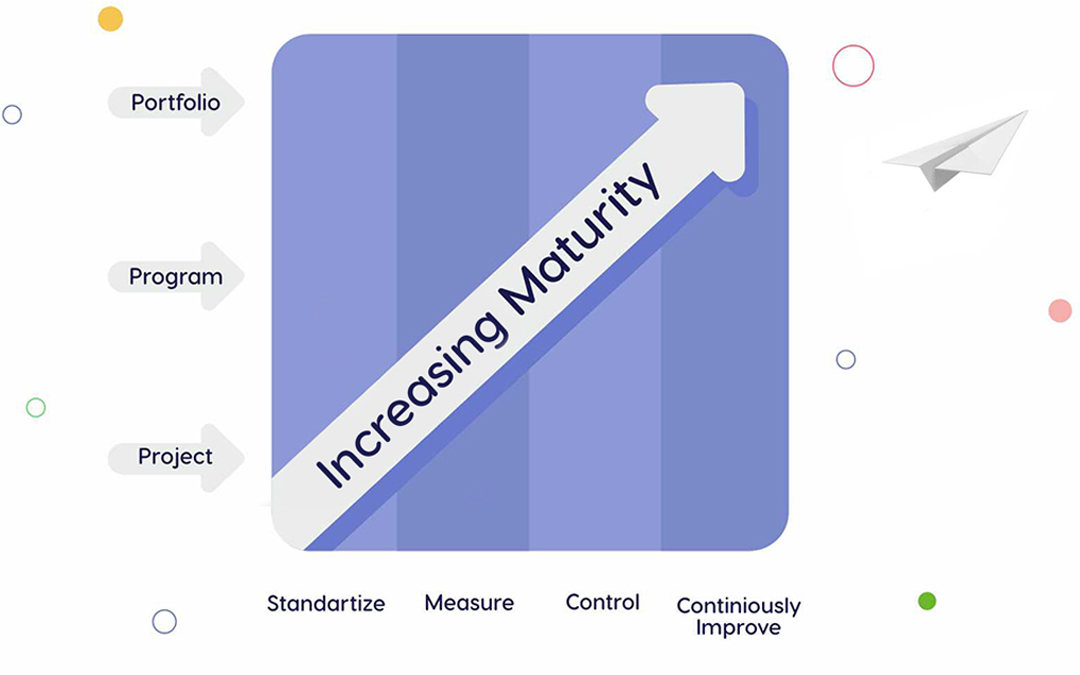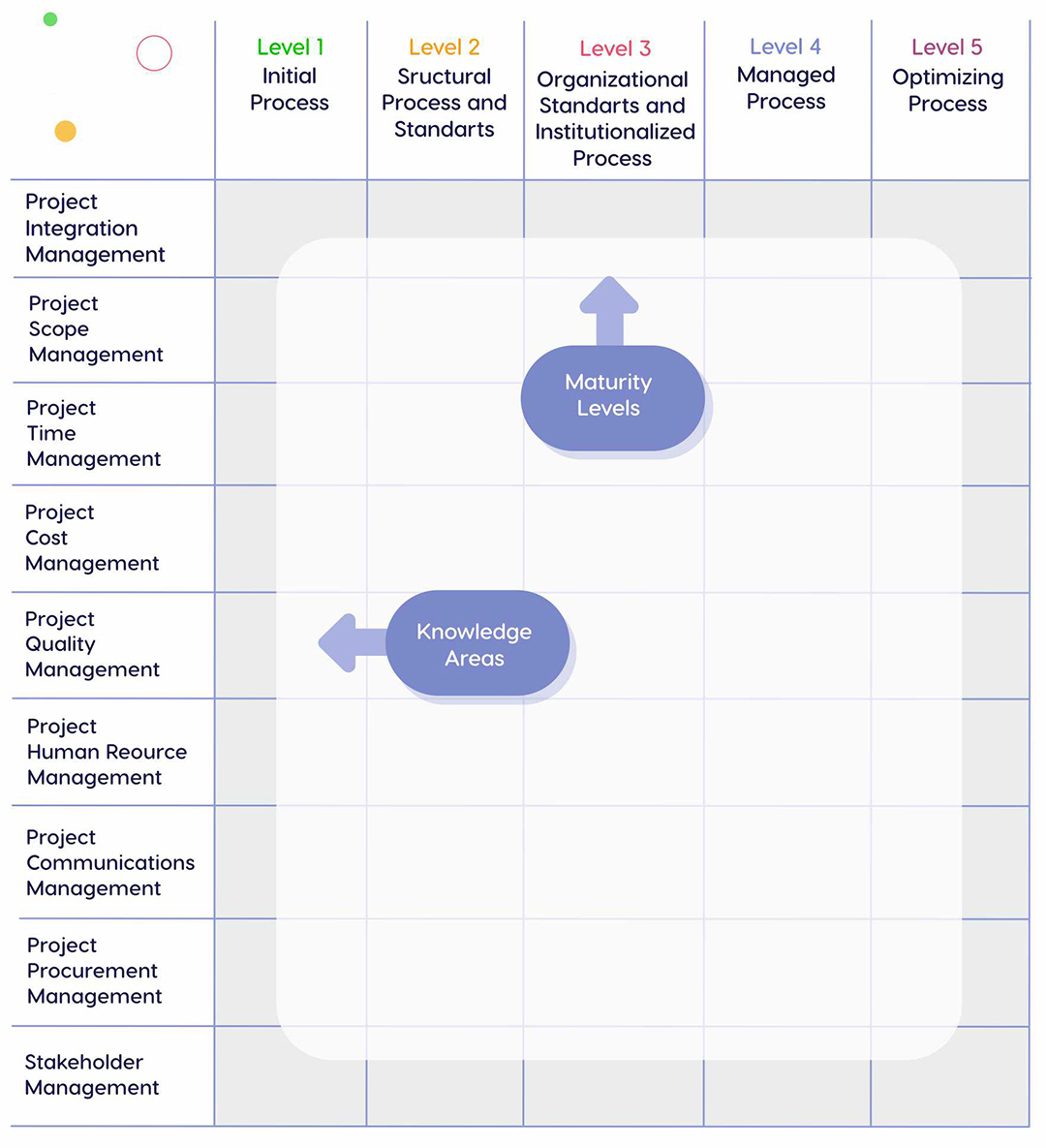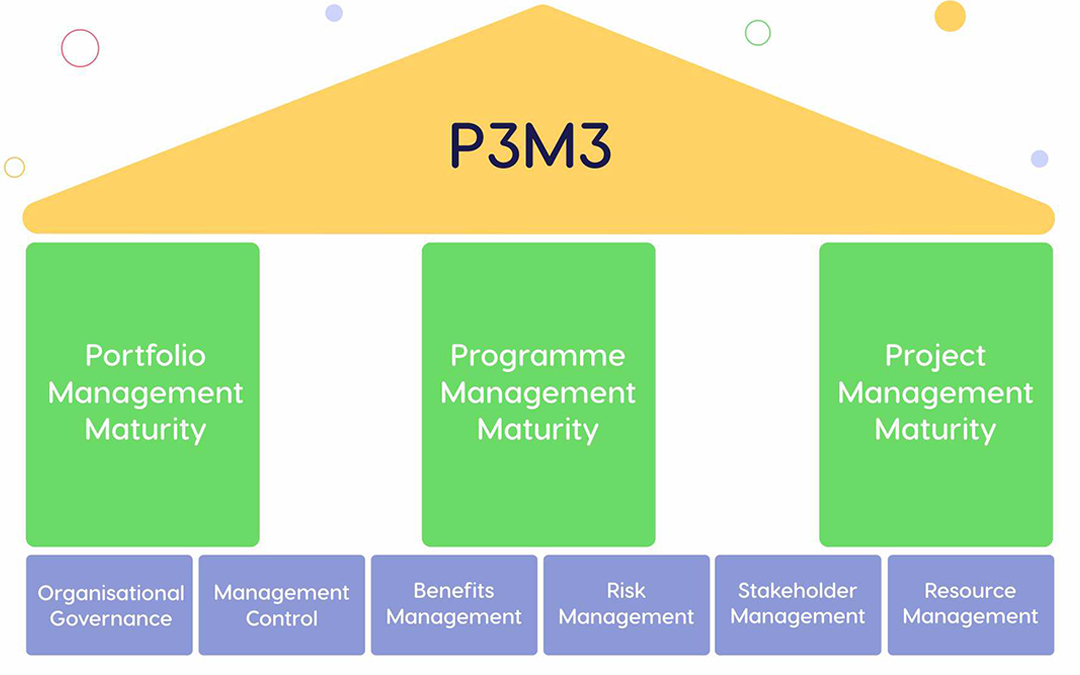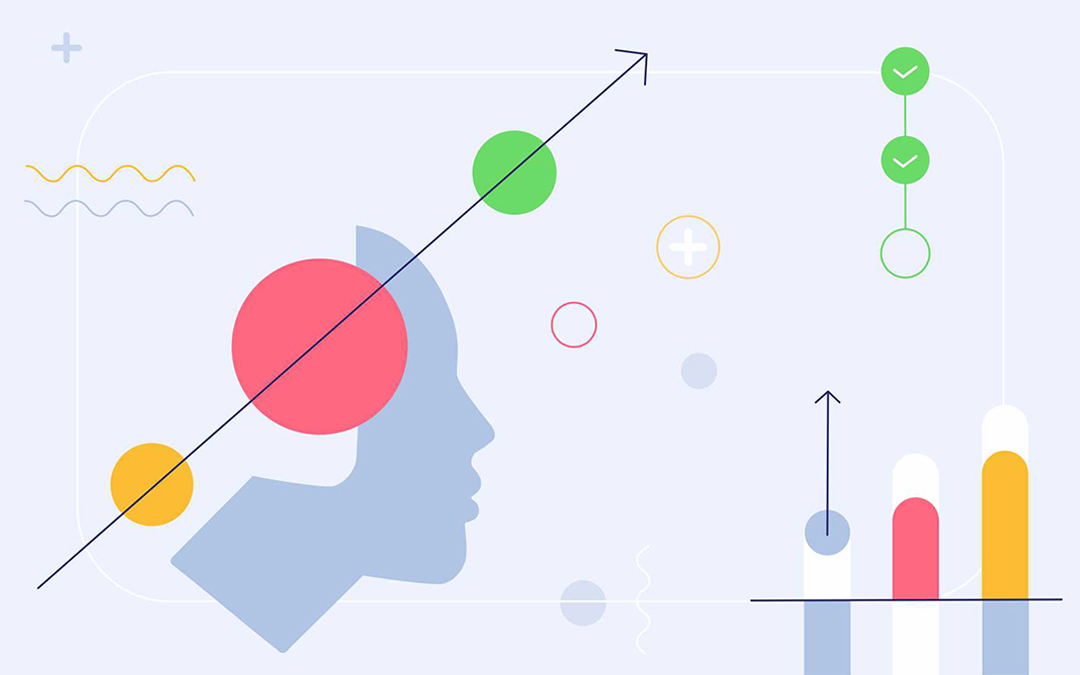Do you know your organization’s project management maturity level? If not, it’s high time to change the situation: project management maturity has a direct impact on a company’s competitiveness and business success.
What is project management maturity exactly, and how to define its level? What are project management maturity models? Find answers to these questions in the article.
Project Management Maturity Models: An Overview
Before we dive into the description of project management maturity models, let’s clarify what project management maturity means. Project management maturity (or PMM) reflects a company’s ability to manage projects efficiently. In particular, the high level of PMM means that:
- Projects are delivered on time and budget;
- Risks and changes don’t derail projects;
- Projects are aligned with a company’s business objectives;
- The delivered output meets stakeholder expectations;
- A company is competitive on the market.
The main purpose of determining project management maturity is to assess the actual state of the project management process in an organization as well as detect areas and direction for its improvement.
To determine the PMM level, corresponding models are used. They usually describe levels indicating the current state of an organization in terms of project management efficiency and propose recommendations on how to proceed to more sophisticated levels.
Let’s examine some of them.
Organizational Project Management Maturity Model (OPM3)

OPM3 was developed by the experts of the Project Management Institute, so it’s considered as a standard for achieving organizational PM maturity. It’s a tool that helps companies understand and assess the efficiency of their organizational project management (including project, program, and portfolio management) and its ability to implement high-level strategic planning. Also, the model provides companies with self-assessment material (about 150 questions for self-assessment) as well as a list of best practices with corresponding capabilities on how to drive improvement in an organization.
According to the OPM3 standard, organizational maturity can be improved through the following three stages:
- Knowledge describes organizational project management and its maturity, explains why they are important, and how project management maturity can be recognized.
- Assessment presents methods, processes, and procedures that a company can use to self-assess its maturity.
- Improvement outlines the way from a company’s current maturity level to a more sophisticated one.
The main advantages of this model are as follows:
- It’s based on the PMBOK Guide and incorporates expertise of hundreds of project management practitioners and consultants.
- It strengthens the link between an organization’s strategic planning and its execution.
- It provides the basis for improving an organization’s PM maturity levels (best practices with corresponding capabilities).
The Project Management Maturity Model by PM Solutions

The Project Management Maturity Model developed by PM Solutions Consulting Company is a two-dimensional framework. The first dimension present the 10 Knowledge Areas defined in the PMBOK Guide. These Knowledge Areas reflect the main categories of the project management process (managing scope, time, budget, quality, resources, communications, risk, procurement, stakeholders as well as integration management). The second dimension represents the maturity levels based on the Capability Maturity Model developed by the Software Engineering Institute (one of the most popular and widely-accepted models of organizational maturity assessment). Let’s take a look at these levels.
- Level #1: Initial process.
At this level, there aren’t any established project management practices or standards; documentation and metrics are ad hoc.
- Level #2: Structure process and standards.
An organization has certain project management processes and corresponding documentation, but they aren’t standardized. Senior management supports the project management process, but isn’t involved in it. An organization uses basic metrics to track project performance.
- Level #3: Organizational standards and institutionalized process.
This level is characterized by the involvement of senior management and clients in some project management processes, their automation, and standardization with formal documentation.
- Level #4: Managed process.
Lessons learned and future forecasts are used in the project management process. Senior management clearly understand their role in the project management process. Project management processes and standards are integrated with other organization’s processes and systems. Project information is analyzed and used for business decisions’ optimization.
- Level #5: Optimizing process.
Lessons learned are reviewed regularly to improve project management activities. An organization is focused not only on managing projects, but continuous improvement. Project metrics become the basis for making business decisions for the future.
In addition, this model provides a guide and assessment framework that aim to help organizations achieve higher maturity levels and develop project management capabilities based on the main project management knowledge areas.
The Portfolio, Program and Project Management Maturity Model (PM3M)

The Portfolio, Program and Project Management Maturity Model provides organizations with a framework to assess and benchmark the state of their performance as well as helps them develop improvement plans. It’s a versatile model that can be used regardless of the project management approach that a company follows (PMBOK, PRINCE2, etc.).
P3M3 comprises three sub-models that can be also used independently: portfolio management, program management, and Project Management. In turn, each sub-model covers seven project management process perspectives: organizational governance, management control, benefits management, risk management, stakeholder management, finance management, and resource management.
P3M3 offers a five-level maturity framework; each level being one of the structural components of the model:
- Level 1 – Awareness of process;
- Level 2 – Repeatable process;
- Level 3 – Defined process;
- Level 4 – Managed process;
- Level 5 – Optimized process.
Leveraging the model will provide companies will the following benefits:
- Learning about the maturity level organizations should achieve to meet their business needs;
- Focusing a company’s investments on those aspects that will drive the most important improvements;
- Assessing organizations’ strengths and weaknesses.
In such a way, P3M3 provides organizations with an integrated vision of improvement that in turn will lead to higher productivity, better quality of outcomes, and customer satisfaction.
Management Maturity Model
MMM is one of the recently developed models. It aims to help project-based organizations achieve PM maturity using a customizable, strategic, systematic, and practical approach, and is applicable for project, program, and portfolio management.
MMM is based on 6 KPIs of successful project delivery (value, efficiency, speed, innovation, complication, and impact) as well as 4 success factors (scope, cost, time, and risk). The model involves the use of the Deming Wheel (or PDCA cycle) to drive continuous improvement:
- Plan (establish targets),
- Do (measure outcomes),
- Check (assess performance),
- Act (enhance protocols).
The model can be used as a self-assessment tool; at the same time, the authors suggest the involvement of experienced assessors to help companies identify their objectives and capabilities, certify the self-assessment process, and provide them with recommendations.
The main difference of this model is that it’s rather flexible (takes into account the present-day ever-evolving business environment) and customizable to different project-based organizations.
These were just some examples of project management maturity models. Most of them embrace similar maturity levels, and have the same purpose – maximum optimization of the project management process in a company. The difference between them is in the way they propose to achieve this purpose and the degree of complexity (e.g., OPM3 is more complex than MMM).
No matter what maturity model you’ll choose, there’s one more important thing you shouldn’t neglect: leveraging the right resource management solution can significantly accelerate your journey to the desired maturity level. To illustrate this statement, let’s take a look at RM solution’s most essential functions that drive projects to successful outcomes:
- Automatic task prioritization across the whole portfolio of projects for clear focus on the most important work for the moment;
- Providing insight into the state of all projects running in an organization;
- Detecting bottlenecks before they become problems and hamper the flow;
- Facilitating the most efficient resource allocation based on team members’ skills, capacity, and availability;
- Providing grounds for informed decision-making;
- Tracking progress and overall performance;
- Balancing employees’ workload.
These and other functions are available in Epicflow – a global multi-project resource management solution based on a game-changing approach to managing organization’s projects and their shared resources. Want to learn more? Book a call with our expert.

